One of the best ways to add realism to a layout is to replicate a specific traffic pattern. At best, this traffic pattern is from the prototype we are modeling, but practices from a great many prototype railroads can be applied to one’s model railroad.
I’ve been a fan of the Rio Grande Southern since my first visit to Durango when I was 13. That was also the year I acquired my copy of Beebe and Clegg’s Mixed Train Daily with its superb coverage of things narrow gauge. That’s a long time to be a student of the narrow gauge, and yet I recently discovered something new. I was perusing Volume 7 of The RGS Story from Sundance Ltd. I had read the book several times in the past, but for the first time it hit me that I was missing an interesting pattern of train operations on my layout.
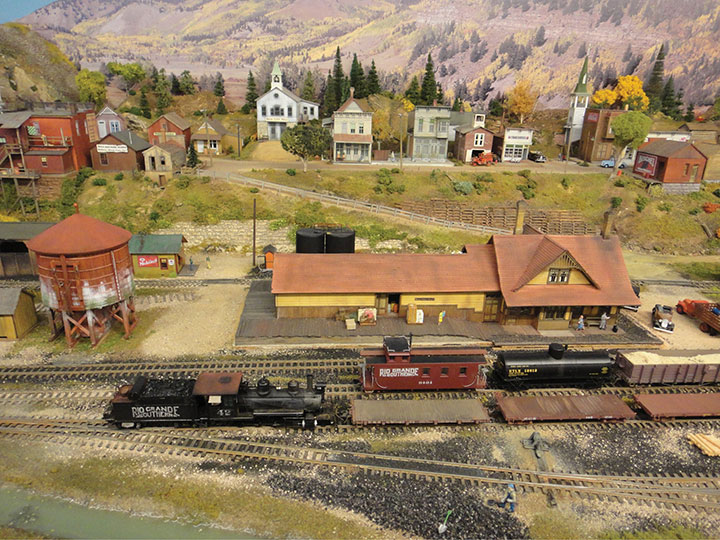
Narrow Gauge Unit Train
In the early Forties the RGS was operated as three divisions, so to speak. A train made a two-day turn from Durango to Dolores. Another train made a two-day turn from Ridgway to Rico. The middle portion from Rico to Dolores was only about 30 miles long and was handled by a daily turn out of Rico. Fine. I’ve been portraying this pattern on my RGS layouts for years.
But here’s the operations wrinkle that I had been missing: for nearly a year during 1941 and 1942 the RGS hauled logs for the Montezuma Lumber Company whose mill was at McPhee, five miles down the Montezuma company’s track from the RGS connection at Dolores. Montezuma was cutting timber north of Rico. They were loading logs onto flatcars at Timber Spur near Coke Ovens. They ran the flatcars in ten-car batches which the RGS had prepared by cutting down former C&S gondolas. Various sources say the Montezuma “unit train” fleet had 20 cars, 30 cars, or nearly 30 cars. I don’t care about the car count; I seek the spirit of the thing.
Layout-Friendly Operation
The daily turn from Rico to Dolores on the prototype RGS was given an additional job. Before heading south to Dolores, the locomotive would first take ten empty flatcars north to Timber Spur and exchange them for ten loaded flats. The locomotive and loaded cars would return to Rico, add the timber flats to the train for Dolores, and commence its usual run as the Dolores Turn.
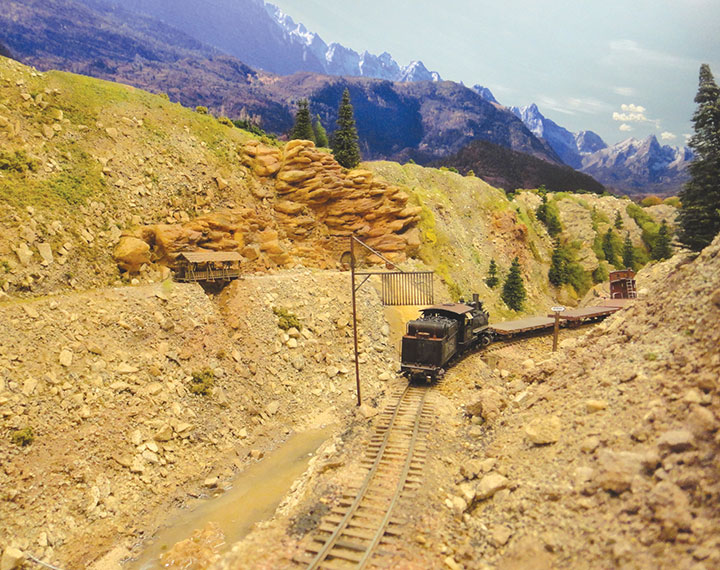
One model-railroad-friendly feature of this operation was the lack of a turning facility at Timber Spur. The locomotive ran in reverse while pulling the loaded log cars back to Rico.
It was easy to add this operation to my RGS layout. My operations pattern is designed such that every train ends its run in position to be another train at the start of the next session. At the proverbial end of the day, the train from Ridgway sits in front of the Rico depot, ready to be tomorrow’s southbound to Dolores. And, today’s northbound from Dolores sits in front of the Rico depot ready to be tomorrow’s train to Ridgway. The daily train from Dolores includes three empty timber flats.
Before the Dolores Turn heads south at the start of a new day, it first makes up a train of the three empty flats from yesterday’s train from Dolores and — plus a caboose — runs with locomotive in reverse to Coke Ovens. At Coke Ovens, the three empty flats are swapped for the three loads of logs. The train returns to Rico, adds the log cars to the Dolores train, and begins its run to Dolores and back.
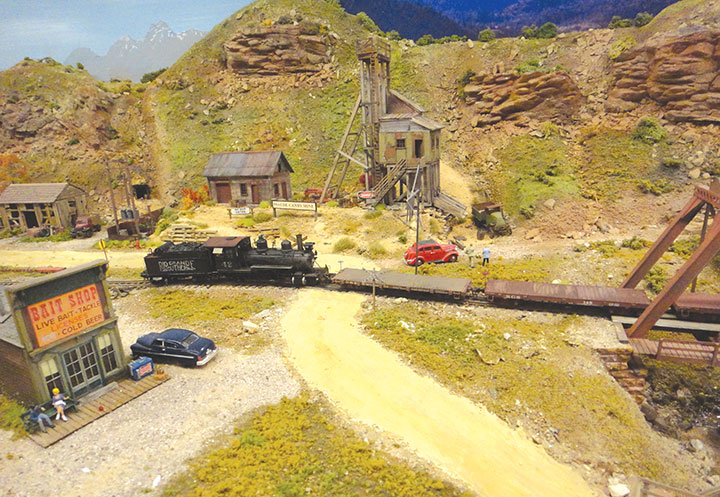
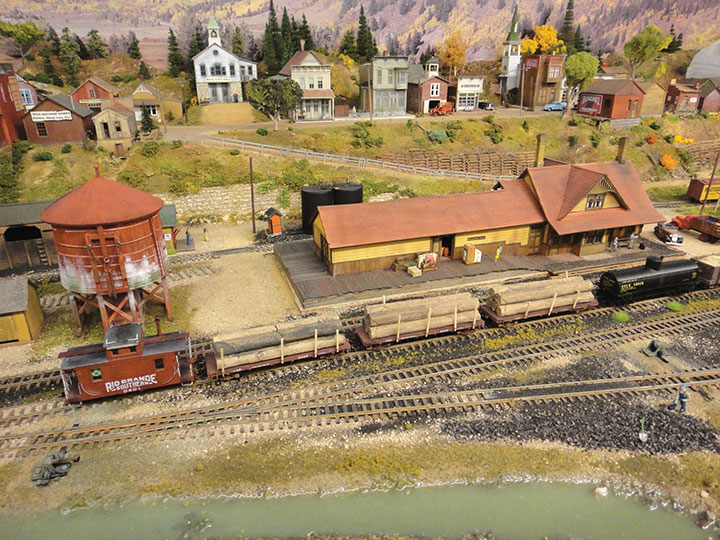
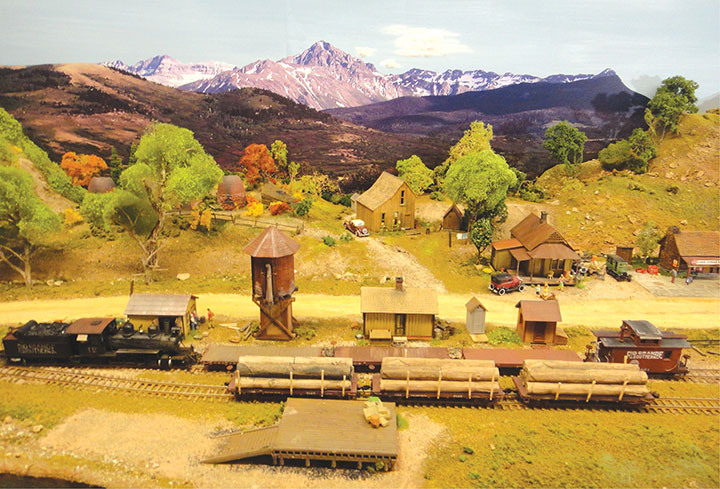
Adaptations For The Layout
The operation of the Dolores Turn on my layout now includes the Montezuma timber traffic, but it isn’t a perfect replication. I had to skew things to fit the layout. My locomotive runs in reverse on the northbound trip rather than the southbound. My “unit log train” is three cars instead of ten. That’s necessary so that my Dolores trains fit the sidings. In my world, the Montezuma Lumber Company is loading cars at Coke Ovens instead of Timber Spur. On the prototype, the two places were only a couple miles apart. I built Coke Ovens into my layout and not Timber Spur, and don’t have space to add Timber Spur now. Coke Ovens serves the purpose just fine. My layout portrays September, 1947, and I use modelers’ license to overlook the fact that the Montezuma unit trains had quit running five years earlier.
Conclusion
By keeping your eyes open to prototype operating patterns, you can sometimes find an interesting operation that fits your layout. It belatedly occurred to me that my Dolores Turn would be a much more interesting job if I included the Montezuma Lumber Company timber traffic. I wasn’t able to replicate the operation down to the last milepost or number of cars, but I’ve captured the spirit of the thing. As a result, the Dolores Turn has become a more interesting job — and seems just a tad more realistic.